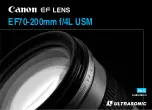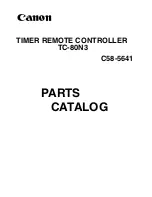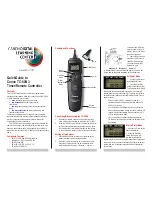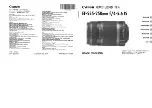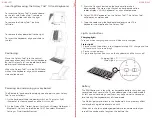
www.ti.com
3.4
Output Op Amp
EVM Operation
Table 3. DAC Output Channel Mapping
Reference
Jumper Position
Function
1-2
DAC output A (V
OUT
A) is routed to J4-2.
JMP11
2-3
DAC output A (V
OUT
A) is routed to J4-10.
1-2
DAC output B (V
OUT
B) is routed to J4-4.
JMP12
2-3
DAC output B (V
OUT
B) is routed to J4-12.
1-2
DAC output C (V
OUT
C) is routed to J4-6.
JMP13
2-3
DAC output C (V
OUT
C) is routed to J4-14.
1-2
DAC output D (V
OUT
D) is routed to J4-8.
JMP14
2-3
DAC output D (V
OUT
D) is routed to J4-16.
In order to allow exclusive control of each EVM, different SYNC signals must be selected for each
DAC8555. This difference is not easily accomplished as it involves hardware alterations. The EVM board
that sits on the bottom of the stack can use the SYNC signal coming from J2B-7. The pin of J2A-7 can be
cut so that the SYNC signal coming from the bottom EVM board in the stack does not pass through. The
EVM board that sits on top can use the CNTL signal coming from J2-1. The signal of J2-1 must be
jumpered across to J2-7 of the EVM board that sits on the top of the stack. The LDAC, SYNC and
ENABLE control signals are shared. The DAC8555 only responds when the correct SYNC signal is
generated.
The raw outputs of the DAC can be probed through the even numbered pins of J4, the output terminal,
which also provides mechanical stability when stacking or plugging into any interface card. In addition, it
provides easy access for monitoring up to eight DAC channels when stacking two EVMs together.
The DAC8555EVM includes an optional signal conditioning circuit for the DAC output through an external
operational amplifier, U2. The output op amp is set to unity gain configuration by default. Only one DAC
output channel can be monitored at any given time. JMP15 selects which pin of J4 is the input. Either J4-1
or J4-3 can be used as the op amp signal input. The default setting for JMP15 selects J4-1. A shorting
jumper can be placed between one of the DAC outputs and the op amp input. For example, a jumper
across J4-1 and J4-2 places the DAC A output as the input for the op amp if board jumpers are in the
default position. If JMP15 is in the alternate position, then a shorting block between J4-3 and J4-2 makes
the DAC B output the input to the op amp.
The output of U2 passes through JMP16. In the default position, the output connects to J4-5. When
JMP16 is in the alternate position, the output from U2 connects to J4-7. The output can be monitored
from, or passed to, another device from the J4 connector.
The jumper arrangement of JMP15 and JMP16 connecting to J4 allows U2 to be used in the stacked
board arrangement discussed above in
Section 3.3
.
The following subsections describe the different configurations of the output amplifier, U2.
SLAU204 – December 2006
DAC8555EVM User's Guide
17
Submit Documentation Feedback

























